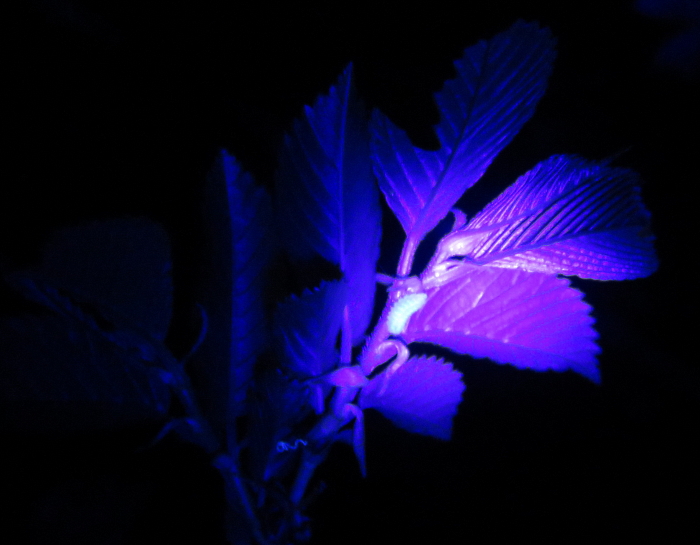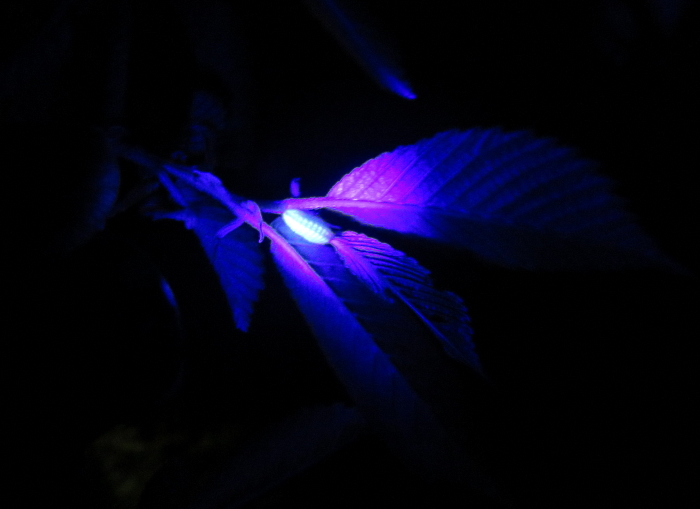
This is a useless way of getting decent photos of the cats - I totally failed to get any good flash piccies tonight, even though I got a good one a couple of nights ago. But it might be a good way of finding and counting them. I wonder if other caterpillars are easier to locate like this - purple emperor cats, for example ...
Does anyone have experience of this kind of thing? I am using UVA, which is said to be harmless, not UVB or UVC (I use a handheld UVC sanitiser around the house to protect my dad from any nasty viruses ... Very good for things like newspapers and letters, that you can't wash in soap and water!).
Guy







